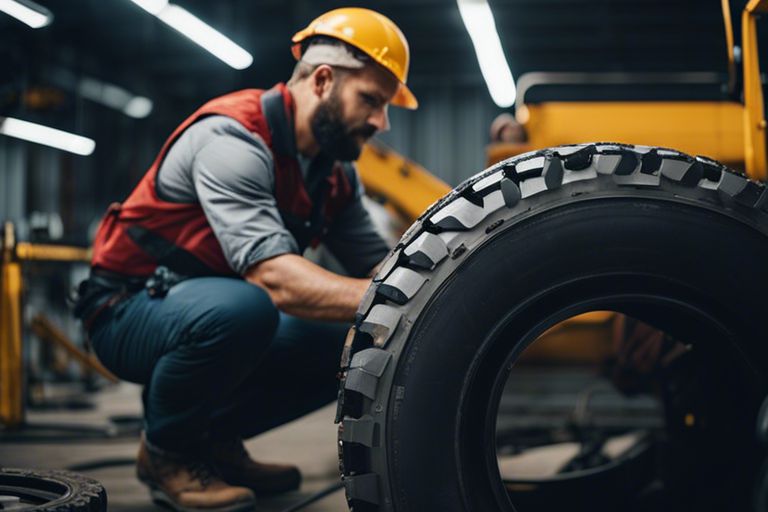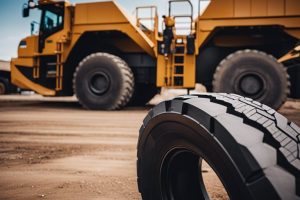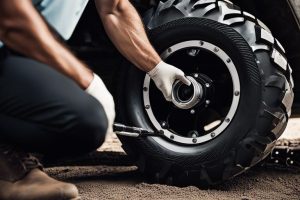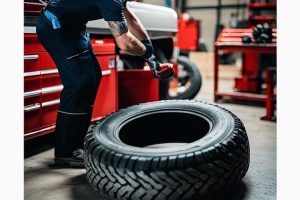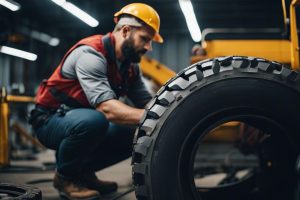Embark on the journey of successfully installing Off-The-Road (OTR) tires with our comprehensive step-by-step guide. This intricate process requires precision and care to ensure optimal performance, safety, and longevity of your heavy-duty equipment. With detailed instructions and professional tips included, you will be equipped to tackle this task with confidence. Safety precautions and key considerations will be highlighted to navigate through the challenges and complexities of OTR tire installation. Learn how to master this necessary skill and keep your machinery running smoothly.
Key Takeaways:
- Proper Equipment: Ensure you have the necessary tools like a tire mounting machine, bead breaker, and tire iron to safely and effectively install OTR tires.
- Follow Manufacturer Guidelines: Always refer to the manufacturer’s instructions for the correct procedure on installing OTR tires to prevent damage and ensure optimal performance.
- Professional Assistance: If you are not experienced in tire installation, it’s recommended to seek help from professionals to avoid any potential safety hazards or incorrect installations.
Pre-Installation Considerations
While begining on the installation of OTR tires, there are several important pre-installation considerations that must be taken into account to ensure a successful and safe installation process. These considerations cover factors affecting OTR tire selection and the tools and equipment needed for installation.
Factors Affecting OTR Tire Selection
For any OTR tire installation project, it is crucial to consider various factors that can affect tire selection. Tire size, tread pattern, terrain, load capacity, and vehicle specifications all play a significant role in determining the most suitable OTR tire for the job. It is important to match the tire specifications with the requirements of the vehicle and the operating conditions to ensure optimal performance and safety.
- Tire size: Matching the tire size with the vehicle specifications is imperative for proper fit and function.
- Tread pattern: The tread design should be selected based on the terrain the vehicle will be operating on.
- Load capacity: Ensure the tire’s load rating matches or exceeds the vehicle’s requirements.
After considering these factors, it is crucial to select the OTR tire that best suits the specific needs of the vehicle and the operating conditions to ensure safety and maximize performance.
Tools and Equipment Needed for Installation
For an OTR tire installation project, having the right tools and equipment is imperative to ensure a smooth and efficient installation process. Tire irons, bead breakers, air compressors, torque wrenches, and tire mounting machines are some of the imperative tools needed for OTR tire installation. These tools help in safely mounting and securing the tires onto the vehicle’s rims with precision and accuracy.
Installation of OTR tires requires specialized tools and equipment to handle the large size and heavy-duty construction of these tires. Using the right tools not only ensures a successful installation but also promotes safety and can help prevent damage to the tires or rims during the mounting process.
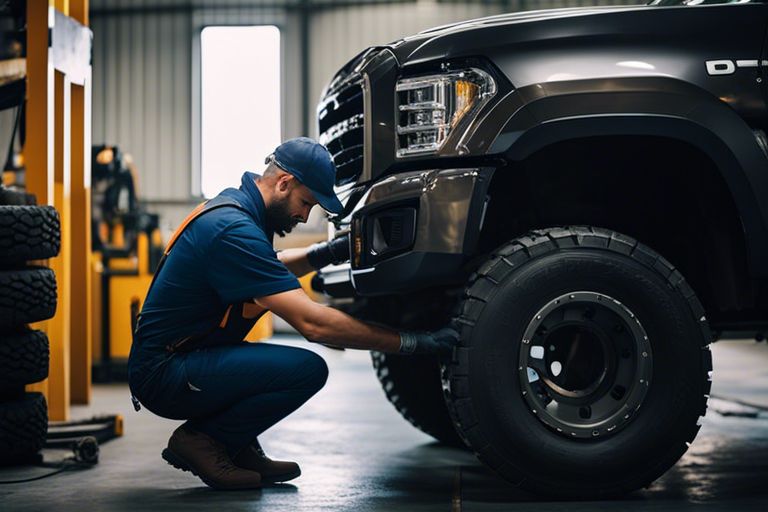
Preparation for Installation
It is crucial to prepare thoroughly before installing OTR (Off-The-Road) tires to ensure a smooth and safe process. For detailed instructions on how to mount and demount tires properly, refer to Tire Mounting: Right Way to Mount and Demount Tires.
Safety Tips Before Beginning
Prior to starting the tire installation process, it is necessary to prioritize safety. Always wear protective gear such as gloves and goggles to prevent any injuries. Make sure the work area is clean and well-lit to avoid accidents. Double-check that all tools are in proper working condition before commencing the installation process.
- Use a tire gauge to ensure proper tire pressure.
- Stabilize the vehicle with jack stands before beginning any work.
- Have a fire extinguisher nearby in case of emergencies.
Knowing and following these safety precautions will help prevent accidents and injuries during the tire installation process.
Pre-Installation Inspection of Tires and Rims
Before proceeding with the installation, a thorough inspection of the tires and rims is necessary to identify any damage or issues that could affect the installation process. Check the tires for any signs of wear, such as cuts or bulges, and inspect the rims for any cracks or bends that may cause problems.
Installation of OTR tires should only proceed if both the tires and rims pass the pre-installation inspection without any issues. Any concerns should be addressed and resolved before moving forward to ensure a successful installation process.
The Installation Process
To ensure the proper installation of OTR tires, it is crucial to follow a step-by-step guide and implement professional tips for efficiency and safety. The installation process can be complex, but with the right approach, you can successfully mount OTR tires on heavy machinery.
Step-by-Step Guide to Installing OTR Tires
Any successful installation of OTR tires starts with carefully preparing the work area and ensuring that all necessary tools and equipment are readily available. Follow this step-by-step guide to ensure a smooth installation process:
| Step 1: | Inspect the OTR tire and rim for any damage or defects. |
| Step 2: | Apply lubricant to the tire beads and rim flanges to ease installation. |
| Step 3: | Use a proper mounting machine to secure the tire onto the rim. |
| Step 4: | Inflate the tire to the recommended pressure and check for leaks. |
Professional Tips for Efficient and Safe Installation
Any professional handling of OTR tires requires specific expertise to ensure the job is done efficiently and safely. Here are some tips to guide you through the installation process:
- Proper Training: Ensure that technicians performing the installation are properly trained and qualified.
- Use of Safety Equipment: Always wear safety gear, such as gloves and safety glasses, during the installation process.
- Double-Check: Before operating the machinery with the newly installed OTR tires, double-check all connections and inflate the tires to the recommended pressure.
Knowing these professional tips will help you achieve a successful OTR tire installation while prioritizing safety and efficiency. It is important to follow industry best practices and adhere to safety protocols to prevent any accidents during the installation process.
- Proper Alignment: Ensure proper alignment of the tire beads and rim flanges to prevent damage during installation.
To ensure a successful installation of OTR tires, it is crucial to follow a precise step-by-step guide and incorporate professional tips to promote efficiency and safety. By following these guidelines, you can confidently mount OTR tires on heavy equipment and ensure optimal performance and safety.
Post-Installation Checks
Once again, before hitting the road after installing your OTR tires, it is crucial to perform post-installation checks to ensure safety and optimal performance. These checks are necessary to catch any issues that may have been overlooked during the installation process and to prevent potential problems down the line.
Ensuring Proper Installation
An necessary post-installation check is to inspect the tire pressure to ensure it matches the manufacturer’s recommended levels. Incorrect tire pressure can lead to uneven wear and poor performance. Additionally, make sure that all lug nuts are properly tightened to the specified torque to avoid any safety hazards on the road.
After checking the tire pressure and lug nuts, examine the tire sidewalls for any irregularities or damage. Look out for cuts, bulges, or cracks that could indicate potential tire issues. It is also important to confirm that the valve stems are intact and secure, as they play a critical role in maintaining proper tire pressure.
Tips for Extending Tire Life and Performance
- Regular Maintenance: Schedule routine tire inspections and maintenance to ensure they are in good condition.
- Proper Alignment: Align your tires regularly to prevent uneven wear and extend tire life.
- Correct Loading: Avoid overloading your vehicle to prevent excessive tire strain.
On top of the post-installation checks, following these tips can help extend the life and performance of your OTR tires. Regular maintenance is key to spotting and addressing any issues early on, preventing costly replacements down the line. Assume that investing time and effort into caring for your tires will pay off in the long run by keeping you safe on the road and maximizing the lifespan of your tires.
Maintenance and Troubleshooting
Routine Maintenance Guidelines for OTR Tires
On a regular basis, it is crucial to inspect the air pressure in OTR tires to ensure they are properly inflated. Proper inflation not only extends the lifespan of the tire but also improves fuel efficiency and overall performance. Additionally, routine checks for cuts, cracks, or punctures on the tire surface should be conducted to prevent any potential issues while in operation. Regularly monitoring the tread depth and ensuring proper wheel alignment are also vital maintenance practices that should not be overlooked.
Moreover, tire rotation should be performed as recommended by the manufacturer to promote even wear and extend the life of the tires. Keeping OTR tires clean from debris and foreign objects is equally important to prevent damage and maintain optimal performance. Following these routine maintenance guidelines will help maximize the longevity and efficiency of OTR tires, ultimately saving time and money in the long run.
Troubleshooting Common Issues After Installation
Troubleshooting common issues after installation of OTR tires may involve addressing problems such as uneven tire wear, vibration during operation, or irregular tire pressure. These issues can often be traced back to improper installation, misalignment, or inadequate maintenance practices. Inspecting the tires for signs of abnormal wear patterns, such as cupping or scalloping, can help identify underlying issues that need to be corrected.
Troubleshooting Common Issues After Installation
Plus, ensuring that the lug nuts are properly torqued and that the valve stems are intact can help prevent air leaks and maintain consistent tire pressure. If vibration is experienced while operating heavy equipment with OTR tires, it is advisable to check for wheel imbalance or misalignment and address the root cause promptly. By promptly troubleshooting and addressing common issues after installation, you can prevent costly downtime, increase safety, and optimize the performance of your OTR tires.
1. Lift machine with proper equipment for tire installation.
2. Remove old tires carefully to avoid damage.
3. Inspect rims for damage and clean thoroughly.
4. Secure new OTR tire onto rim using proper tools.
5. Inflate tire to recommended pressure before mounting.
6. Check tire pressure and balance after installation for safety.
Summing up
Taking this into account, installing OTR tires can be a complex process that requires careful attention to detail and adherence to safety protocols. By following the step-by-step guide provided and incorporating the professional tips included, tire installation can be done efficiently and effectively. Remember to prioritize safety at all times and consider seeking assistance from a professional if needed. With the right knowledge and tools, installing OTR tires can be a manageable task that ensures optimal performance and longevity for your equipment.
FAQ
Q: What are OTR tires?
A: OTR tires, or Off-The-Road tires, are heavy-duty tires designed for use on heavy vehicles such as construction equipment, agricultural machinery, and mining vehicles that operate off-road in challenging terrains.
Q: Why is it important to install OTR tires correctly?
A: Proper installation of OTR tires is crucial for ensuring optimal performance, safety, and longevity of the tires. Incorrect installation can lead to tire damage, premature wear, and safety hazards for the operator and other personnel.
Q: What are some professional tips for installing OTR tires?
A: Some professional tips for installing OTR tires include: ensuring proper tire alignment, using the correct tools and equipment, following the manufacturer’s guidelines, properly inflating the tires to the recommended pressure, and inspecting the tires for any defects or damages before installation.
